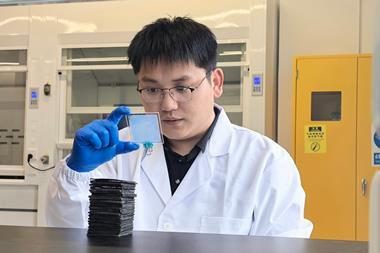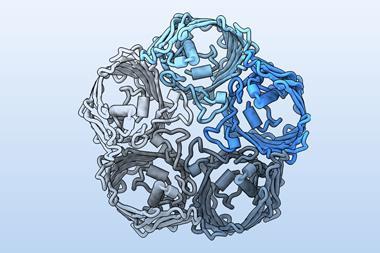Agrochemical giants are locking horns over biotech patents for genetic technologies
BASF and DuPont are squaring up for a battle over technology that makes plants resistant to commonly used herbicides. These acetolactate synthase (ALS) inhibitor herbicides block the acetolactase enzyme within unwanted weeds, starving them of the essential amino acids valine, leucine and isoleucine. The two companies use a technology to confer a genetic trait upon crops making them tolerant to this class of herbicides.
BASF claims that DuPont’s Optimum GAT corn product infringes its patented genetic component; DuPont is making a similar claim against BASF. Both want the other’s patents declared invalid.
’My understanding is that the companies have been trying to settle this, presumably by some kind of cross-licensing agreement,’ says patent attorney Noel Akers of N.J. Akers & Co. ’It is entirely possible that they will have overlapping patents, and for either company to make and sell that product, they would need a licence from the other as they would be infringing one or more patents. For the two of them to be contemplating expensive litigation, it is significant technology.’
Companies are increasingly challenging each other’s biotechnology patents in the agrochemical area - just before BASF and DuPont launched their actions, Monsanto filed a suit against DuPont claiming infringement of its patents on resistance to glyphosate, a widely-used broad-spectrum herbicide. The herbicide market itself is fairly mature, with many generic products available, and there is more money to be made in selling seeds that have been genetically engineered to be resistant to one or other product.
’The companies see genetic technologies, including the platform technologies which are the subject of this litigation, as crucial to their longer term future, despite setbacks for GM in Europe,’ says Colin Ruscoe, chairman of the British Crop Production Council. ’The litigation reflects the importance of this sector of their business to their overall strategies, given the continued pressures on chemical methods.’
According to Stuart Jackson, partner at law firm Kempner Robinson, companies have not got very far suing the end-users of their technology, so they are now going after each other. Monsanto failed in its suit against Cargill, for example, because the soya flour it was selling did not contain Monsanto’s patented DNA (which was used in soya plants from which the beans to make the flour came from) in active form.
’A large number of patents claim isolated DNA sequences and ways of using them to produce GM seeds or plants, but when it comes to the flour it is so far removed that it doesn’t infringe it,’ says Jackson. ’It is more clear [when] another manufacturer of GM seeds has used the patented process. The owners of these patents have been singularly unsuccessful in suing people who have bought the products, so they’re now going to the top of the chain and the companies who are making the seeds.’
Sarah Houlton
Interesting? Spread the word using the ’tools’ menu on the left.






No comments yet